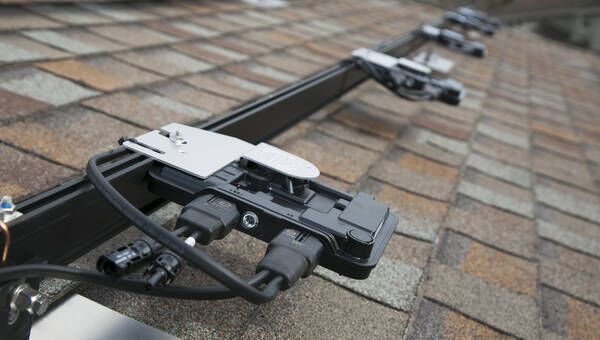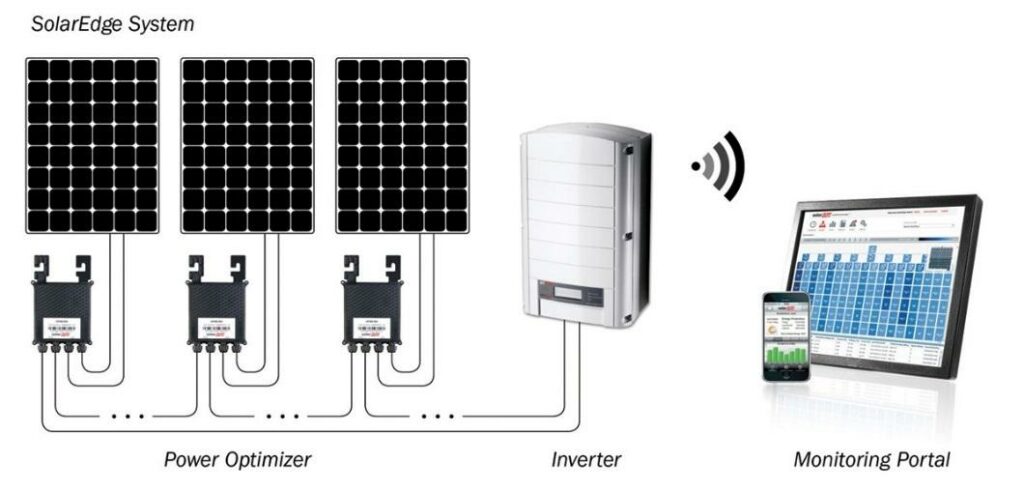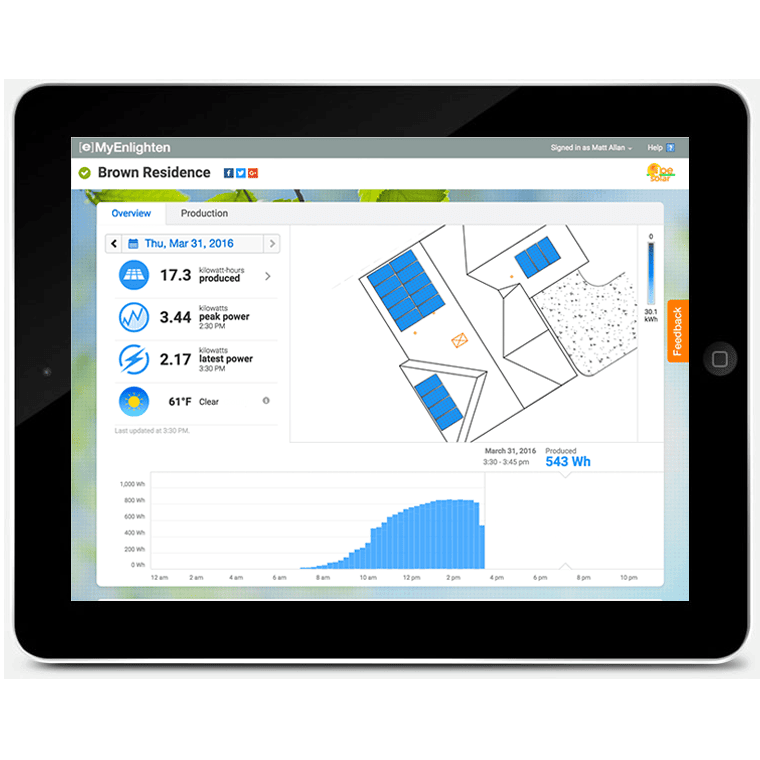

A grid-tied solar power system is directly connected to the home and the traditional electric utility grid. Grid-tied systems allow the homeowners to get power from either the installed solar system or the utility grid. Switching between the solar system and the grid is seamless.
The prime advantage of this type of system is the ability to balance the system production and home power requirements. When a grid-tied system produces more power than the home is consuming, the excess can be sold back to the utility in practice, known as net metering. When the system is not producing sufficient power, the home can draw power from the utility grid.
Grid-tied solar systems are the most popular and the lowest cost type of residential solar electric system due to having fewer required components.
One of the few drawbacks to a grid-tied only solar electric system is that your home cannot use solar energy to power the home when the utility grid goes down. The utility requires the solar array to shut down immediately if the grid loses power automatically. The good news is Sun City Solar can add battery storage to a grid-tied system so you will never be without power in your home.
Most grid-tied systems installed today are installed with microinverters. Microinverters are reliable, easy to install and come with a 25-year power warranty. String inverters have been around longer than microinverters and are still popular with large solar installs and systems with batteries.
Microinverter
Microinverters are mounted directly behind each solar module, turning the Direct Current (DC) electricity from each solar module into usable Alternating Current (AC) electricity. Because this conversion is happening at the modular level, you’re maximizing the potential output of your system. If a tree shades one solar panel, it won’t affect the output of any other solar panel because there is no single point of failure.
Microinverters also eliminate potentially hazardous high voltage DC wiring and make your solar system much easier to expand in the future.
Maximum Power Point Tracking (MPPT) is a technology used in microinverters that optimizes the electricity output by responding to varying light levels every couple of minutes throughout the day. Even during cloudy days, this technology allows the modules to produce some energy for the home.
Every microinverter can also be monitored remotely with web-based software. If a module or microinverter fails or has an error, the monitoring system will alert you so the issue can be resolved in a timely fashion.

String System With DC Optimizers
A string inverter is usually mounted on a wall by the main electrical panel. Most residential grid-tied solar systems will only have one string inverter. Larger residential systems and commercial systems may have multiple string inverters installed.
A string inverter will convert Direct Current (DC) electricity from several solar modules into usable Alternating Current (AC) electricity at ground level by your service panel. Consequently, string inverters can be high voltage.
Sun City Solar Energy installs string inverters that can be paired with power optimizers. Power optimizers are installed behind each module with Maximum Power Point Tracking (MPPT) technology. This technology maximizes the energy output of each module, much like a microinverter system. Furthermore, the power optimizers monitor the performance of each module and communicate performance data to web-based software.
If a module or inverter fails or has an error, the monitoring system will alert you so the issue can be resolved in a timely fashion.
Check Out the Article “Solar Systems: Grid-Tied vs. Battery Backup”.

Monitoring For Grid-Tied Solar System
All grid-tied solar systems installed by Sun City Solar come with real-time web-based monitoring. A system owner can monitor the current and historical performance of their system by using a smartphone app or by logging into a web portal.
Monitoring also allows the owner to quickly know when there is a system error or failure. If an issue is detected, Sun City Solar can normally diagnose and address the problem through the online monitoring system without visiting the home.
